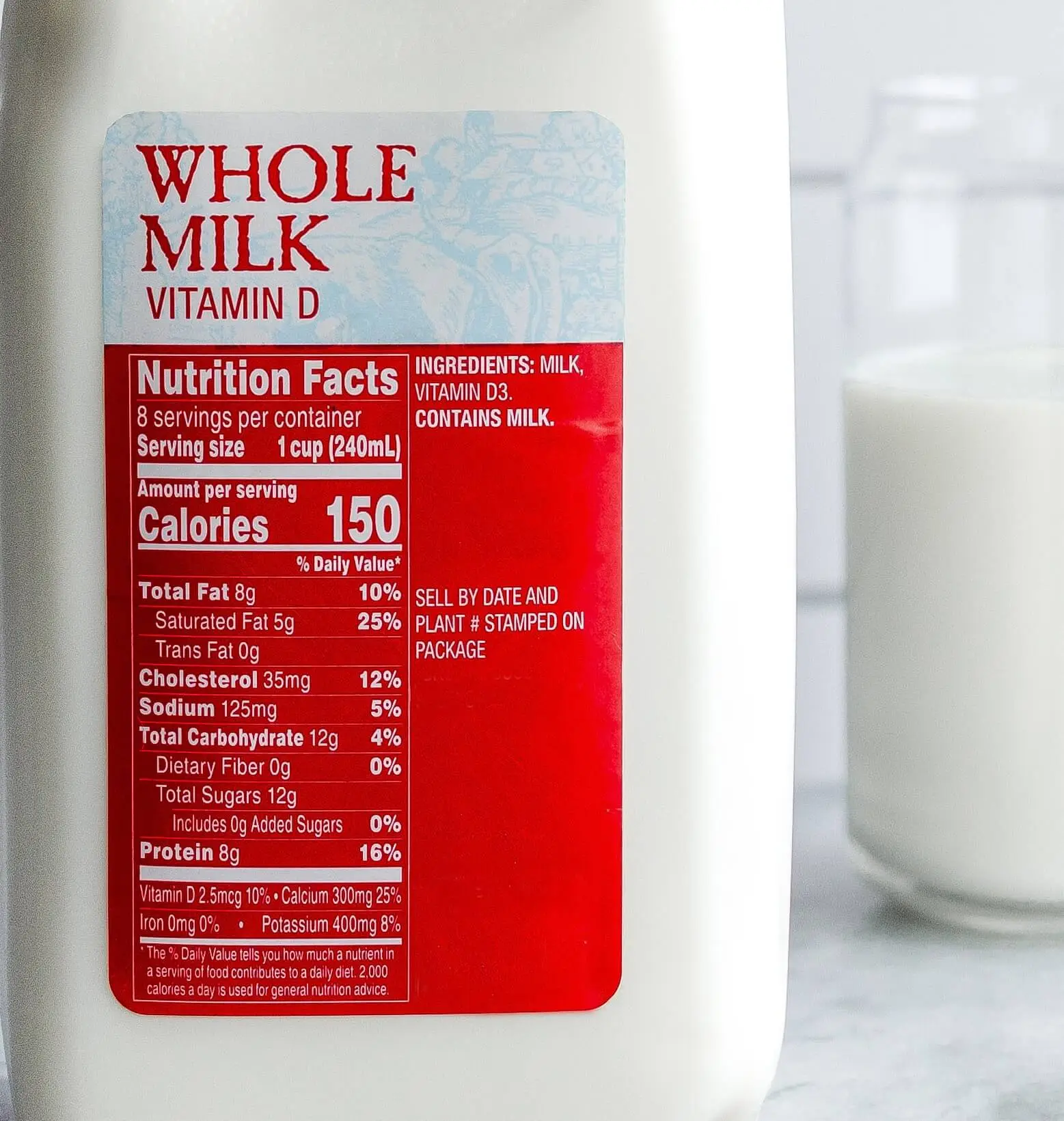Is Whole Milk a Healthy Choice: Understand Milk Nutrition, Calories, and Protein Benefits
This article was reviewed by Megan Maisano, MS, RDN
Recent research and articles have shed new light on the role of saturated fat in today’s diet, and whole milk appears in a lot of these discussions. Even the taste of whole milk is a hot topic in some circles. If all of this has you curious, or if it’s been a while since you’ve had some in a latte, let’s see why whole milk can be a good choice for you.
What Is Whole Milk?
Whole milk is good old-fashioned cow’s milk, containing about 3.25% milk fat, and is most similar to its original state when it comes from the cow. The main difference between whole milk and other milks in the dairy case, like reduced fat, is the fat content. Let’s break it down.
Whole Milk Nutrition Facts
Every serving of milk provides vitamins, minerals, protein, and energy (calories). All milk, whether whole milk or fat-free milk, lactose-free milk or chocolate milk, comes with 13 essential nutrients, such as protein, calcium, vitamin A and vitamin D, vitamin B12, riboflavin, niacin, phosphorus, pantothenic acid, zinc, selenium, iodine and potassium.
How Many Calories In a Cup of Whole Milk?
Food provides energy, or calories, to help fuel your body. A one-cup serving of milk contains about 150 calories. Whole milk is more calorie-dense than reduced-fat or skim milk, making it a good option for those looking for a more energy-rich beverage.
How Much Fat Is In Whole Milk?
A 1-cup serving of milk contains about 8 grams of fat. You could also say whole milk has roughly 3.25% milk fat. If you keep that in mind, milk fat percentages make more sense: reduced-fat milk (2%), low-fat milk (1%) and fat-free milk (or 0% if you want to be a stickler), which is also called skim milk.
How do we get these percentages? Here’s how it works: After the milk leaves the farm, it goes to a processor, where the milk is pasteurized, homogenized, and separated from the cream. Some of the cream is then added back in, like 2% of it, so that’s how you get reduced-fat milk. Or 3.25% is added back for whole milk. This type of fat is primarily saturated fat. Most guidelines recommend limiting saturated fat, but emerging science and research shows that dairy foods, regardless of fat content, can contribute to a healthy diet and offer health benefits.
How Much Protein Does Milk Have?
No matter the fat percentage, all milk is a good source of naturally occurring, high-quality protein. Milk contains 8 grams of protein in a cup—or about 1 gram of protein per ounce. Milk contains two types of protein: casein and whey. When consumed before bedtime, casein is thought to help maximize repair and building of muscles as we sleep. That’s because it’s digested more slowly than whey, which releases amino acids to muscles sooner. Whey’s faster action might be why some athletes choose chocolate milk as a recovery drink after a workout.
Milk also contains a naturally occurring sugar called lactose; about 12 grams in a cup. White milk of all fat levels does not contain added sugars.
How Many Carbs in Milk?
Whole milk, like all types of milk, contains carbohydrates in the form of lactose, a naturally occurring sugar. Whole milk contains 12 grams of carbohydrates per one cup.
This sugar provides a steady source of energy, making milk a great choice for staying fueled throughout the day. Whether you're enjoying it on its own or as part of a meal, the carbs in whole milk offer a clean, nutrient-rich way to get some energy.
Is Whole Milk Bad For You?
Whole milk is not inherently bad for you; it is a nutrient-rich beverage that provides 13 essential vitamins and minerals like calcium, vitamin D, and potassium.
What exactly do all those 13 essential nutrients listed above do anyway? Those vitamins, minerals and macronutrients (like protein) do everything from help build healthy bones and maintain a healthy immune system to help regulate your metabolism and maintain healthy skin. Most of us don’t get nearly enough of these nutrients, and milk is an easy way to meet daily requirements. That is why the Dietary Guidelines for Americans recommends low-fat dairy foods such as milk as part of a healthy diet.
Nerd alert: The dietary guidelines are led by nutrition experts and scientists and updated every five years as more science emerges about what our bodies need to be healthy.
Whole Milk Versus Skim Milk: Is Whole Milk Healthier Than Skim Milk?
That’s like a trick question—the same nutrients are in all types of dairy milk, regardless of fat composition. Yes, the DGA recommends low-fat and fat-free dairy foods, but it doesn’t exclude saturated fat; the limit is capped at 10% of your daily total calories. It is possible to include a serving of whole milk dairy as part of an overall healthy eating plan.
Does Whole Milk Make You Gain Weight?
Whole milk does contain more calories than low-fat or fat-free milk due to the higher fat content. However, the protein in whole milk, and foods made from it, like yogurt or cheese, can help us feel fuller and more satisfied, which can help curb an appetite. In fact, research suggets that drinking whole milk is not linked to unhealthy weight gain and may be beneficial for weight management in both children and adults. For a balanced plate, there are lots of ways to pair “produce & protein” for superb snack and meal ideas. Plus, there are other health benefits ─ dairy foods, including whole milk, can help with inflammation, immunity and gut health.
Try a glass of whole milk for yourself or use whole milk in these delicious recipes:
And for more information on whole milk nutrition, there's no better place than the back of the carton!
















